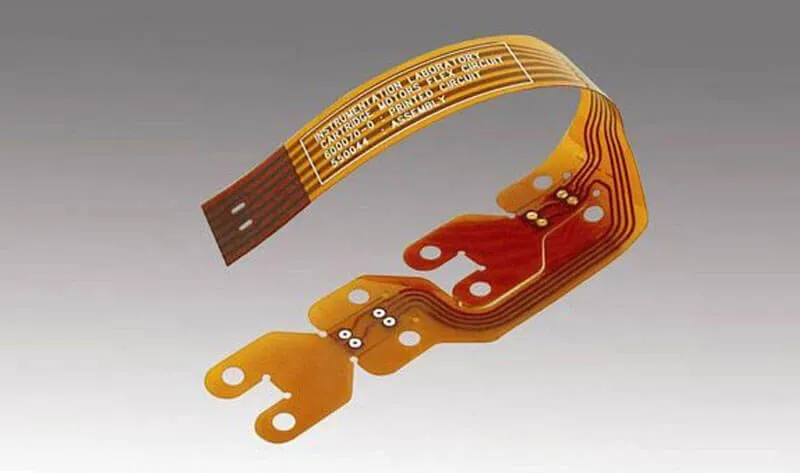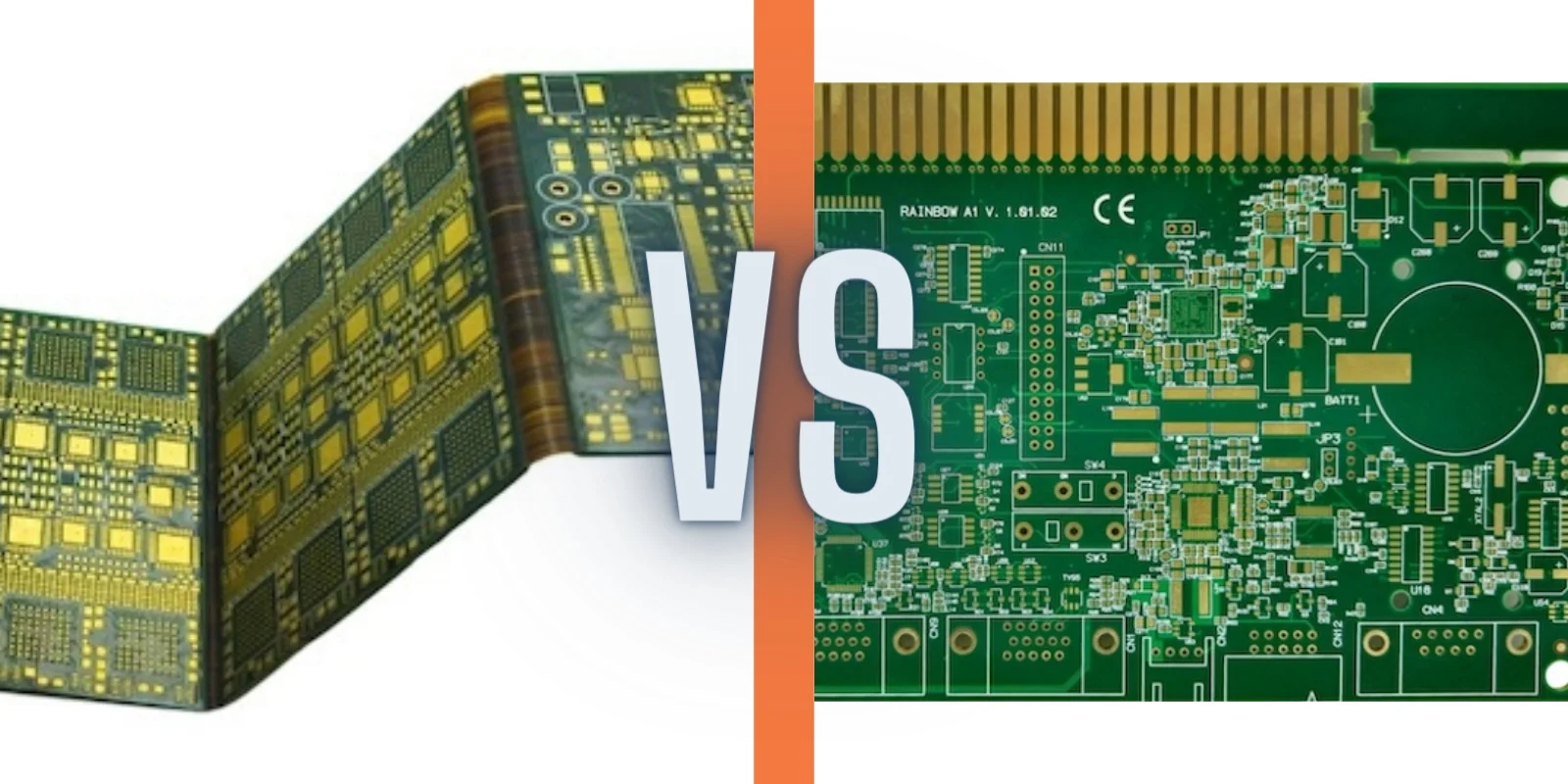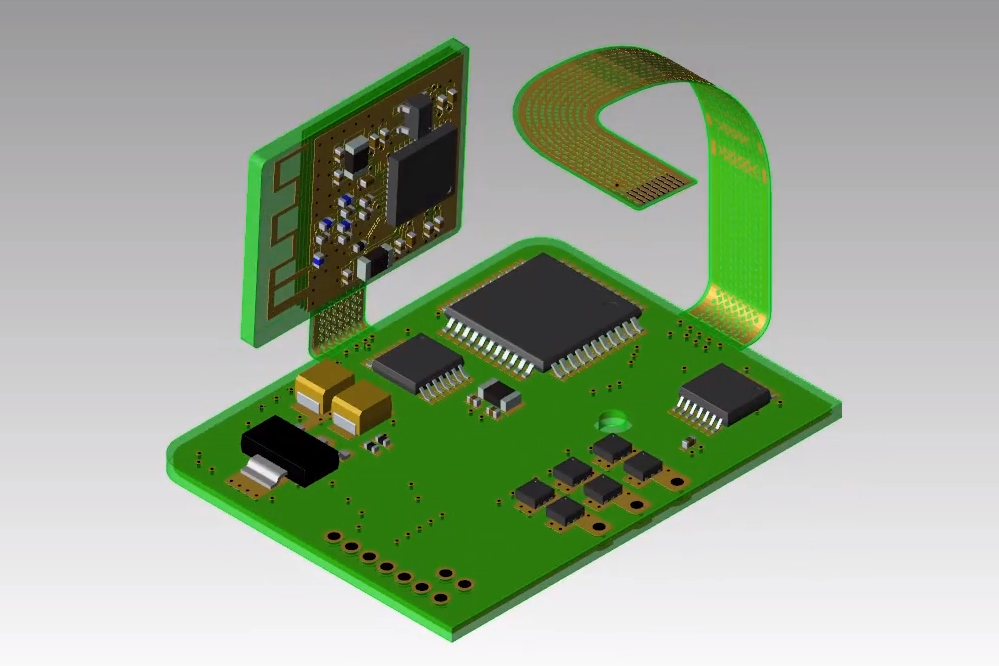In the fast-evolving world of smart home technology, flexible PCBs (Printed Circuit Boards) are emerging as a game-changer. If you're wondering how flexible PCB design can transform smart home devices, the answer lies in their ability to adapt to compact, curved, and dynamic spaces while maintaining high performance. Unlike traditional rigid boards, flexible PCBs—often paired with rigid-flex PCB technology—offer bendable electronics solutions that are lightweight, durable, and perfect for modern designs. In this blog, we’ll dive deep into the benefits of flex PCB materials, their applications in smart home and wearable electronics PCB designs, and why they are shaping the future of tech innovation.
What Are Flexible PCBs and Why Do They Matter?
Flexible PCBs are thin, lightweight circuit boards made from flexible materials that allow them to bend, twist, and conform to various shapes without breaking. Unlike rigid PCBs, which are stiff and fixed, flex PCBs can fit into tight or irregular spaces, making them ideal for compact smart home devices like smart thermostats, security cameras, and voice assistants. Their ability to withstand movement and vibration also makes them a top choice for wearable electronics PCB applications, such as fitness trackers and smartwatches.
The importance of flexible PCB design lies in its adaptability. As smart home devices become smaller and more integrated into everyday objects, the need for bendable electronics grows. With flexible PCBs, manufacturers can create products that are not only functional but also sleek and user-friendly. This technology is driving innovation by enabling designs that were once impossible with rigid boards.

Key Benefits of Flexible PCBs in Smart Home Device Design
Flexible PCBs offer several advantages over traditional rigid boards, especially when it comes to designing smart home devices. Let’s explore some of the key benefits:
1. Space-Saving and Compact Design
Smart home devices often need to fit into small or uniquely shaped spaces, such as curved wall-mounted sensors or tiny smart plugs. Flexible PCBs can be folded or shaped to fit these spaces, reducing the overall size of the device. For instance, a smart light bulb controller can use a flex PCB to wrap around internal components, saving up to 50% more space compared to a rigid board setup.
2. Lightweight Construction
Flex PCB materials, such as polyimide, are incredibly lightweight. This is a critical factor for portable smart home devices or wearable electronics PCBs like smart rings or bracelets. A lighter design improves user comfort and reduces material costs during production.
3. Durability and Reliability
Flexible PCBs are built to handle movement and stress without cracking. In smart home devices that may experience vibrations—such as door sensors or smart locks—flex PCBs ensure consistent performance. Their resistance to thermal expansion also helps maintain signal integrity, with impedance values often controlled within a tight range of 50 to 100 ohms for high-speed data transmission in IoT devices.
4. Cost-Effective for Complex Designs
While the initial cost of flex PCB materials might be higher, they often reduce the need for connectors and cables in complex designs. This can lower assembly costs by up to 30% in some smart home applications, as fewer components are needed to achieve the same functionality.

Flex PCB Materials: What Makes Them Unique?
The materials used in flexible PCB design play a huge role in their performance. Understanding these materials helps engineers choose the right options for smart home and wearable electronics PCB projects. Here are the most common flex PCB materials:
1. Polyimide (PI)
Polyimide is the go-to material for most flexible PCBs due to its excellent thermal stability and flexibility. It can withstand temperatures up to 400°C, making it ideal for smart home devices that may heat up during operation, like smart thermostats. Polyimide also offers a low dielectric constant (around 3.4), which supports high-speed signal transmission at rates exceeding 1 GHz.
2. Polyester (PET)
Polyester is a more affordable option for less demanding applications. While it’s not as heat-resistant as polyimide, it’s still flexible and works well for low-cost smart home devices like basic remote controls. Its dielectric constant is slightly higher, around 3.8, which may limit its use in high-frequency designs.
3. Liquid Crystal Polymer (LCP)
LCP is a premium material often used in high-performance wearable electronics PCBs. It has a very low dielectric constant (about 2.9) and minimal moisture absorption, ensuring stable performance in humid environments—a key feature for smart home devices like bathroom sensors.
By selecting the right flex PCB materials, designers can balance cost, durability, and performance to meet the specific needs of smart home applications.
Rigid-Flex PCBs: Combining Strength and Flexibility
Rigid-flex PCBs are a hybrid solution that combines the benefits of both rigid and flexible boards. These boards have rigid sections for mounting components and flexible sections for bending or connecting different parts of a device. In smart home device design, rigid-flex PCBs are particularly useful for products with complex layouts, such as smart security cameras that require both stability for image sensors and flexibility for wiring in tight spaces.
One major advantage of rigid-flex PCB technology is its ability to reduce points of failure. Traditional designs with multiple connectors can suffer from signal loss or disconnection, but a rigid-flex PCB integrates everything into a single board, improving reliability. Signal speeds in these boards can reach up to 10 Gbps in high-end smart home systems, ensuring seamless data transfer for real-time monitoring and control.

Applications of Flexible PCBs in Smart Home Devices
Flexible PCBs are already making a big impact in the smart home industry. Their unique properties allow for innovative designs that enhance functionality and user experience. Here are some key applications:
1. Smart Sensors and Detectors
Devices like motion sensors, smoke detectors, and water leak sensors often need to be installed in tight or awkward spaces. Flexible PCB design allows these devices to be compact and discreet while maintaining reliable performance. For example, a motion sensor using a flex PCB can be shaped to fit around corners, with signal integrity preserved at frequencies up to 2.4 GHz for wireless communication.
2. Voice-Activated Assistants
Voice assistants, a staple in many smart homes, rely on intricate circuitry to process audio inputs and connect to the internet. Bendable electronics in flex PCBs enable these devices to have a smaller footprint while housing microphones, speakers, and Wi-Fi modules in a single, curved design.
3. Smart Lighting Systems
Smart bulbs and lighting strips often use flexible PCBs to integrate control circuits directly into their structures. This allows for thinner designs and better heat dissipation, extending the lifespan of LEDs by up to 25% compared to rigid board setups.
Flexible PCBs in Wearable Electronics: A Growing Trend
Beyond smart homes, flexible PCBs are revolutionizing wearable electronics PCB designs. Devices like smartwatches, fitness bands, and health monitors require circuits that can bend with the body without losing functionality. Flex PCBs meet this demand by offering durability under constant movement and supporting compact designs that fit comfortably on the wrist or skin.
For instance, a wearable heart rate monitor might use a flex PCB to wrap around internal sensors, maintaining a signal accuracy of ±1 bpm even during intense activity. This level of precision and adaptability is why bendable electronics are becoming the standard for wearable tech, often integrated with smart home systems for seamless control of lights, thermostats, and more from a wrist device.
Challenges in Flexible PCB Design and How to Overcome Them
While flexible PCBs offer many benefits, they also come with unique challenges. Addressing these issues is crucial for successful implementation in smart home devices.
1. Higher Initial Costs
Flex PCB materials and manufacturing processes can be more expensive than rigid boards. However, costs can be offset by reducing the number of connectors and simplifying assembly, leading to savings of up to 20-30% in large-scale production.
2. Design Complexity
Designing a flexible PCB requires careful planning to avoid stress points that could lead to cracking. Using simulation software to test bend radii (often kept above 10 times the board thickness) and layering structures can prevent failures during use.
3. Thermal Management
Smart home devices often generate heat, and flex PCBs must dissipate it effectively. Incorporating thermal vias and choosing materials like polyimide with high thermal conductivity (up to 0.2 W/mK) can help manage temperatures.
The Future of Flexible PCBs in Smart Home Technology
Looking ahead, the role of flexible PCBs in smart home device design is set to grow. According to recent industry reports, the flexible electronics market is projected to reach over $66 billion by 2032, driven by demand in consumer electronics and IoT integration. Innovations in flex PCB materials, such as biodegradable substrates and ultra-thin films, are expected to make these boards even more versatile and sustainable.
As smart homes become more interconnected, bendable electronics will enable seamless integration of devices into furniture, walls, and even clothing. Imagine a future where your smart thermostat is embedded into a flexible panel on your wall, or your wearable electronics PCB syncs effortlessly with every device in your home. Flexible PCBs are paving the way for these possibilities.
Conclusion: Embracing Flexible PCB Design for Innovation
Flexible PCBs are more than just a trend—they are the future of smart home device design. From their space-saving capabilities to their durability and adaptability, flex PCBs and rigid-flex PCB solutions are transforming how we create and interact with technology. Whether it’s through innovative smart sensors, compact voice assistants, or advanced wearable electronics PCBs, bendable electronics are unlocking new levels of functionality and convenience.
By understanding the benefits, materials, and applications of flexible PCB design, engineers and designers can push the boundaries of what’s possible in smart home technology. As this field continues to evolve, staying ahead of the curve with flex PCB solutions will be key to creating cutting-edge devices that meet the needs of tomorrow’s connected world.
 ALLPCB
ALLPCB







